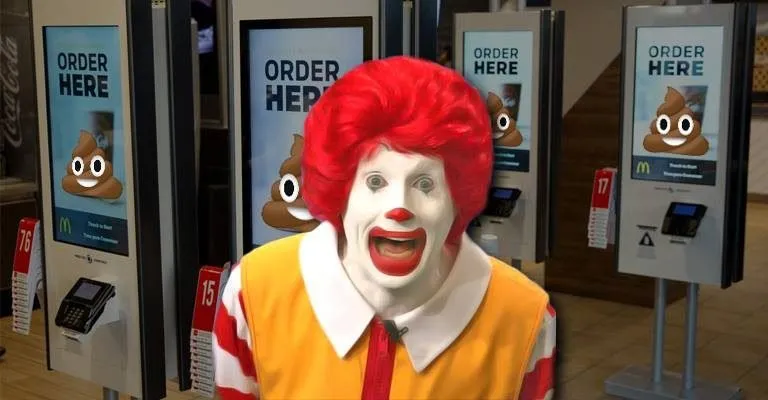
A study recently conducted by researchers at London Metropolitan University found that touchscreens used by customers at multiple McDonald’s locations were covered in fecal bacteria. Dr. Paul Matawele, one of the lead researchers in the study, explained that the spread of this bacteria could lead to serious infections.
“We were all surprised how much gut and faecal bacteria there was on the touchscreen machines. These cause the kind of infections that people pick up in hospitals. For instance Enterococcus faecalis is part of the flora of gastrointestinal tracts of healthy humans and other mammals. It is notorious in hospitals for causing hospital acquired infections,” Matawele said.
Researchers tested eight different McDonalds locations throughout the London and Birmingham area, and each location had its own collection of different viruses and bacteria, from listeria at one location to Staphylococcus at another.
“Seeing Staphylococcus on these machines is worrying because it is so contagious. It starts around people’s noses, if they touch their nose with their fingers and then transfer it to the touchscreen someone else will get it, and if they have an open cut which it gets into, then it can be dangerous. There is a lot of worries at the moment that staphylococcus is becoming resistant to antibiotics. However, it is still really dangerous in places like Africa where it can cause toxic shock,” Dr. Matawele said.
“Listeria is another rare bacterium we were shocked to find on touchscreen machines as again this can be very contagious and a problem for those with a weak immune system,” Matawele added.
Meanwhile, a vast majority of the samples tested positive for traces of the bacteria Proteus.
Dr. Matewele explains, “Proteus can be found in human and animal faeces. It is also widely distributed in soil. It can cause urinary tract infections and is also one of the hospital acquired infections where it may responsible for septicaemia. Klebsiella is also from the gut and mouth, they are associated with urinary tract infections, septicemia and diarrhoea. Some species can infect the respiratory tract resulting in pneumonia.”
Customers receive their food immediately after touching these screens, and they often wash their hands before ordering their food, instead of after. A spokesperson for McDonald’s said that the machines are cleaned regularly throughout the day. The statement from McDonald’s said, “Our self-order screens are cleaned frequently throughout the day. All of our restaurants also provide facilities for customers to wash their hands before eating.”
However, Matewele said that the same bacteria could be found on the machines for several days. This study raises concerns about touchscreen technology in general, as they are becoming more common for public use in fast food restaurants and grocery stores.
“Touchscreen technology is being used more and more in our daily lives but these results show people should not eat food straight after touching them, they are unhygienic and can spread disease. Someone can be very careful about their own hygiene throughout the day but it could all be undone by using a touchscreen machine once,” Matewele says.
While touchscreens present an obvious concern, it is likely that most surfaces in public places contain a variety of different germs, so it is always best to be cautious and hygienic.